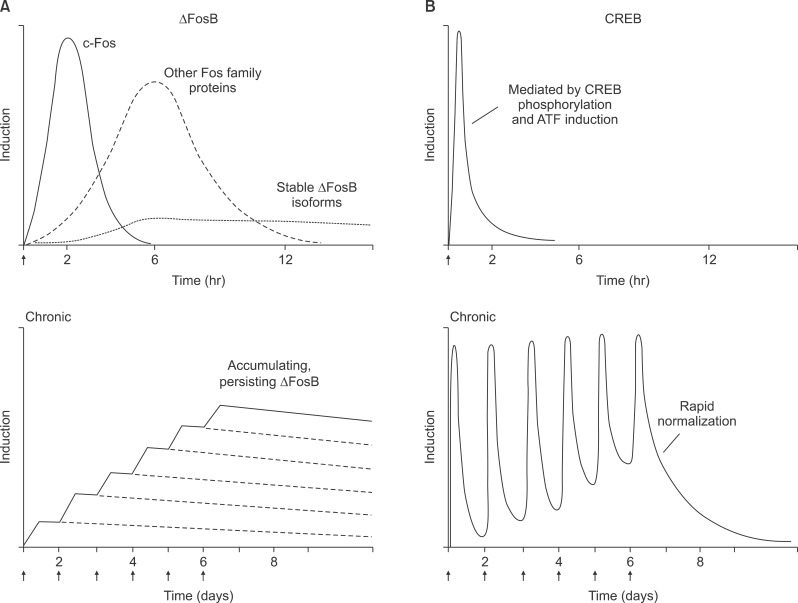Fig. 2.
Distinct temporal properties of drug regulation of ΔFosB vs. CREB. (A) ΔFosB. The top graph shows several waves of Fos family proteins (comprised of c-Fos, FosB, ΔFosB [33 kD isoform], Fra1, Fra2) induced in nucleus accumbens by acute administration of a drug of abuse. Also induced are biochemically modified isoforms of ΔFosB (35-37 kD); they are induced at low levels by acute drug administration, but persist in brain for long periods due to their stability. The lower graph shows that with repeated (e.g., twice daily) drug administration, each acute stimulus induces a low level of the stable ΔFosB isoforms. This is indicated by the lower set of overlapping lines, which indicate ΔFosB induced by each acute stimulus. The result is a gradual increase in the total levels of ΔFosB with repeated stimuli during a course of chronic treatment. This is indicated by the increasing stepped line in the graph. (B) CREB. Activation of CRE transcriptional activity, mediated via phosphorylation and activation of CREB and possibly via the induction of certain ATFs, occurs rapidly and transiently in nucleus accumbens in response to acute drug administration. This "peak and trough" pattern of activation persists through chronic drug exposure, with CRE transcription levels reverting to normal within 1-2 days of drug withdrawal.

